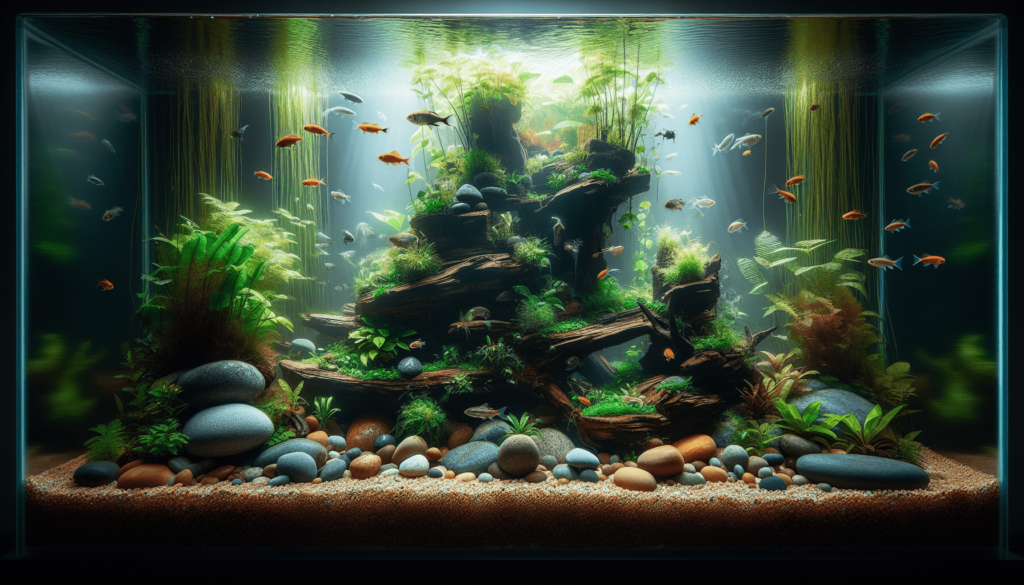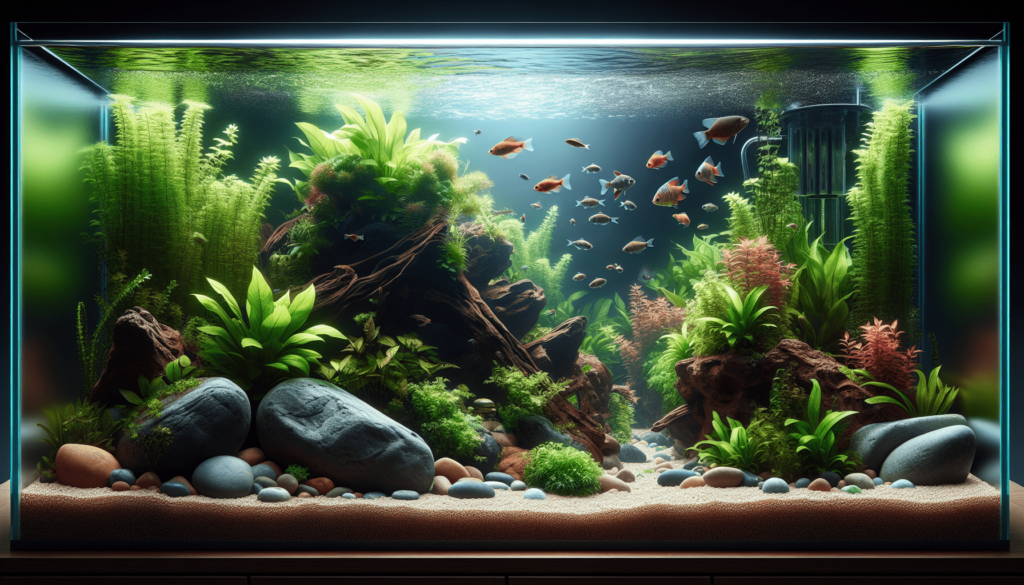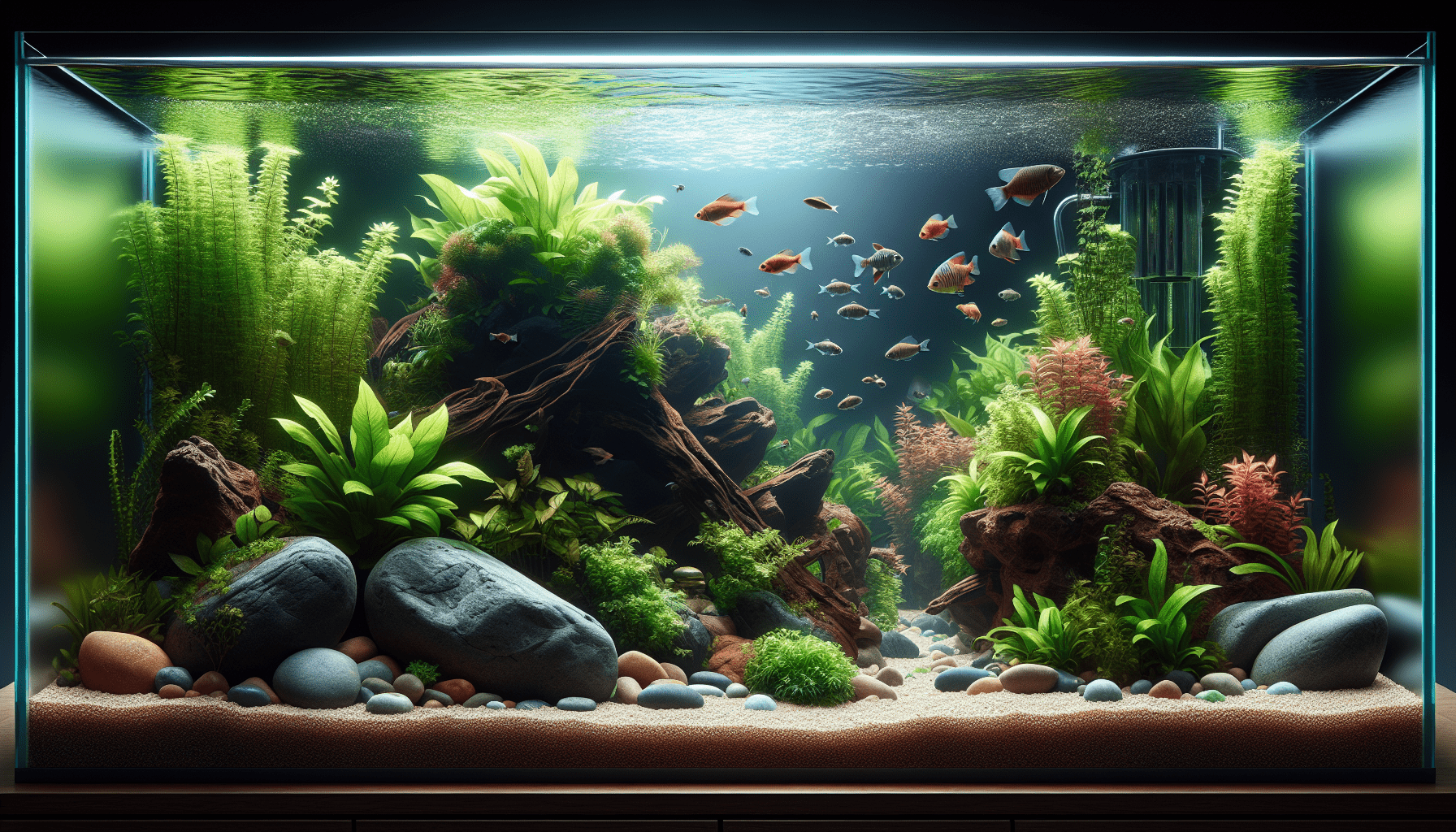Welcome to the wonderful world of fishkeeping! In this article, you will learn all about creating a balanced habitat for your fish to thrive in. From providing the right water parameters to adding adequate filtration and hiding spots, we will explore all the key elements that go into creating a healthy and harmonious environment for your aquatic friends. Let’s dive in and discover how to create a balanced habitat that will keep your fish happy and healthy for years to come. Have you ever wondered how to create a balanced habitat for fish in your aquarium? Keeping fish happy and healthy requires more than just water and food. In this article, we will discuss the key components needed to create a thriving environment for your aquatic friends.

Understanding the Needs of Your Fish
Before you can create a balanced habitat for your fish, it’s important to understand their basic needs. Different species of fish have varying requirements when it comes to water temperature, pH levels, and tank size. Research the specific needs of your fish to ensure you are providing them with the best possible environment.
Fish, like other living beings, have specific requirements to thrive. Understanding your fish’s needs is crucial to creating a habitat that will promote their health and happiness. Do some research and make sure you are providing the right conditions for your aquatic friends.
Water Quality
One of the most crucial aspects of creating a balanced habitat for fish is maintaining good water quality. Fish require clean water to thrive, as poor water quality can lead to stress, disease, and even death. Regular water testing and proper filtration are key to ensuring that your fish have a healthy environment to live in.
Maintaining good water quality is essential for the health of your fish. Regular water testing, proper filtration, and regular water changes are necessary to keep your aquarium clean and your fish happy. Invest in a quality water testing kit and make sure to monitor the water parameters regularly.
Common Water Parameters to Monitor:
-
Temperature: Most fish species have specific temperature requirements, so it’s important to keep the water at the right temperature for your fish to thrive.
-
pH Levels: The pH of the water can affect your fish’s health and ability to absorb nutrients. Monitor the pH levels regularly and make adjustments as needed.
-
Ammonia and Nitrite Levels: These toxic substances can build up in the water and harm your fish. Regular testing and water changes can help keep these levels in check.
-
Dissolved Oxygen: Fish need oxygen to survive, so it’s important to ensure that the water is well-aerated. Aeration devices such as air stones or bubble wands can help increase oxygen levels in the water.
Maintaining optimal water quality is essential for the health and well-being of your fish. By monitoring and regulating these common water parameters, you can create a balanced habitat that will promote the overall health of your aquatic friends.
Tank Size and Layout
The size of your aquarium and the way it is set up can also have a significant impact on your fish’s well-being. Different species of fish require different tank sizes, so it’s important to choose a tank that is large enough to accommodate your fish comfortably. Additionally, the layout of the tank, including the placement of plants, rocks, and other decorations, can provide hiding spots and stimulate natural behaviors.
When it comes to tank size, bigger is always better. Fish need space to swim and explore, so it’s important to choose a tank that is large enough for your fish to thrive. Additionally, the layout of the tank can play a significant role in your fish’s well-being. Adding plants, rocks, and other decorations can provide hiding spots and enrich your fish’s environment.
Tank Size Recommendations for Common Fish Species:
| Fish Species | Minimum Tank Size |
|---|---|
| Betta | 5 gallons |
| Goldfish | 20 gallons |
| Neon Tetra | 10 gallons |
| Angelfish | 30 gallons |
| Clownfish | 20 gallons |
By choosing the right tank size and setting up the tank with the needs of your fish in mind, you can create a balanced habitat that promotes the health and happiness of your aquatic pets.
Temperature Control
Maintaining the right water temperature is crucial for the health of your fish. Most fish species have specific temperature requirements, so it’s important to invest in a quality aquarium heater to keep the water at the right temperature. Sudden fluctuations in temperature can stress your fish and make them more susceptible to illness, so it’s important to keep the water temperature stable.
Temperature control is essential for the health and well-being of your fish. Investing in a reliable aquarium heater and thermometer can help you maintain the right water temperature for your fish species. Avoid placing the tank near sources of heat or cold drafts, as this can cause fluctuations in temperature that can harm your fish.
Recommended Temperature Ranges for Common Fish Species:
- Betta: 75-82°F
- Goldfish: 65-75°F
- Neon Tetra: 70-80°F
- Angelfish: 78-84°F
- Clownfish: 75-82°F
By keeping the water temperature within the recommended range for your fish species, you can create a balanced habitat that will promote their health and happiness.

Lighting
Lighting is another important factor to consider when creating a balanced habitat for fish. Some fish species require specific light levels to thrive, so it’s important to choose the right lighting for your aquarium. In addition to providing the necessary light for your fish, a timer can help regulate the light cycle and provide consistency for your aquatic friends.
Proper lighting is crucial for fish that require specific light levels to thrive. LED lights are a popular choice for aquariums as they are energy-efficient and provide a full spectrum of light that mimics natural sunlight. Consider the lighting needs of your fish species when choosing the right lighting for your aquarium.
Lighting Recommendations for Common Fish Species:
- Freshwater Plants: 8-12 hours of light per day
- Coral Reef Tanks: 10-12 hours of light per day
- Goldfish: 8-10 hours of light per day
- Betta: 6-8 hours of light per day
- Tetras: 10-12 hours of light per day
By providing the right lighting for your fish species and using a timer to regulate the light cycle, you can create a balanced habitat that will promote the health and well-being of your aquatic friends.
Filtration
Proper filtration is essential for maintaining good water quality in your aquarium. A quality filter can remove debris, excess food, and fish waste from the water, helping to keep it clean and free of harmful substances. When choosing a filter for your tank, consider the size of your aquarium, the number of fish, and the specific needs of your fish species.
Filtration plays a crucial role in maintaining good water quality in your aquarium. There are several types of filters available, including hang-on-back filters, canister filters, and sponge filters. Choose a filter that is appropriate for the size of your tank and the needs of your fish, and make sure to clean or replace the filter media regularly for optimal performance.
Types of Aquarium Filters:
-
Hang-On-Back (HOB) Filters: Easy to install and maintain, these filters hang on the back of the tank and provide mechanical, chemical, and biological filtration.
-
Canister Filters: Ideal for larger tanks, canister filters offer high filtration capacity and are suitable for tanks with heavy bio-loads.
-
Sponge Filters: A cost-effective option for smaller tanks, sponge filters provide mechanical and biological filtration and are easy to clean.
By choosing the right filter for your tank size and fish species, you can create a balanced habitat for your fish that promotes good water quality and overall health. Regular maintenance of the filter is essential to ensure that it is functioning properly and keeping your aquarium clean.
Feeding Your Fish
Proper nutrition is essential for the health and well-being of your fish. Different fish species have varying dietary requirements, so it’s important to research the specific needs of your fish and provide them with a balanced diet. Overfeeding your fish can lead to poor water quality and health issues, so it’s important to feed them in moderation.
Feeding your fish a balanced diet is crucial for their health and well-being. Most fish species require a varied diet that includes pellets, flakes, frozen foods, and live foods to ensure they receive all the necessary nutrients. Consider the dietary needs of your fish species when choosing the right food for your aquatic friends.
Feeding Recommendations for Common Fish Species:
- Betta: Pellets, bloodworms, brine shrimp
- Goldfish: Flakes, pellets, peas
- Angelfish: Flakes, pellets, bloodworms
- Guppies: Flakes, live foods
- Tetras: Flakes, small insects
By providing your fish with a varied and balanced diet, you can ensure that they receive all the necessary nutrients to thrive. Feed your fish in moderation and avoid overfeeding to prevent health issues and maintain good water quality in your aquarium.
Monitoring Your Fish
Regularly monitoring your fish is essential for detecting any potential health issues early on. Keep an eye on their behavior, appetite, and physical appearance, and be on the lookout for signs of illness or distress. If you notice any changes in your fish’s behavior or appearance, it’s important to take action immediately to address the issue.
Monitoring your fish regularly can help you detect any health issues early on and prevent them from escalating. Keep a close eye on your fish’s behavior, appetite, and physical appearance, and be on the lookout for any signs of illness or distress. If you notice anything unusual, consult with a veterinarian or a fish expert for guidance.
Signs of Healthy Fish:
- Active swimming
- Bright colors
- Healthy appetite
- Clear eyes and fins
Signs of Unhealthy Fish:
- Lethargy
- Loss of appetite
- Faded colors
- Cloudy eyes or fins
By keeping a close eye on your fish and monitoring them regularly, you can ensure that they are healthy and thriving in their habitat. Taking proactive measures to address any health issues early on can help prevent more serious problems down the line.
Conclusion
Creating a balanced habitat for fish requires careful consideration of their needs and the right environment to promote their health and happiness. By understanding the specific requirements of your fish species, maintaining good water quality, providing a proper tank size and layout, and addressing factors such as temperature, lighting, filtration, feeding, and monitoring, you can create an environment that will support the well-being of your aquatic friends. Remember, a happy fish is a healthy fish, so make sure to prioritize their care and welfare in your aquarium.

